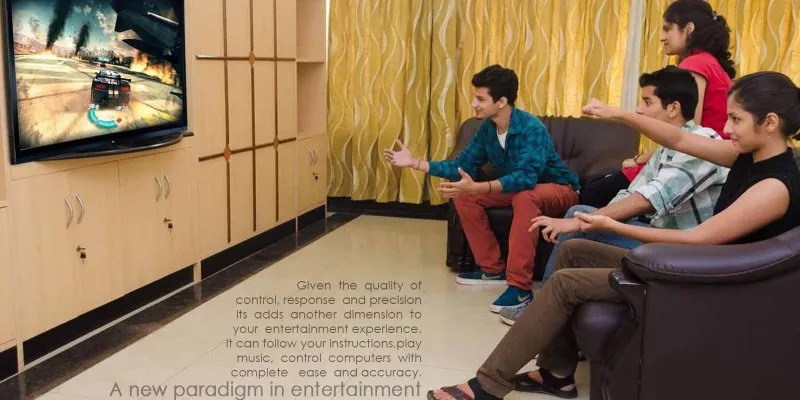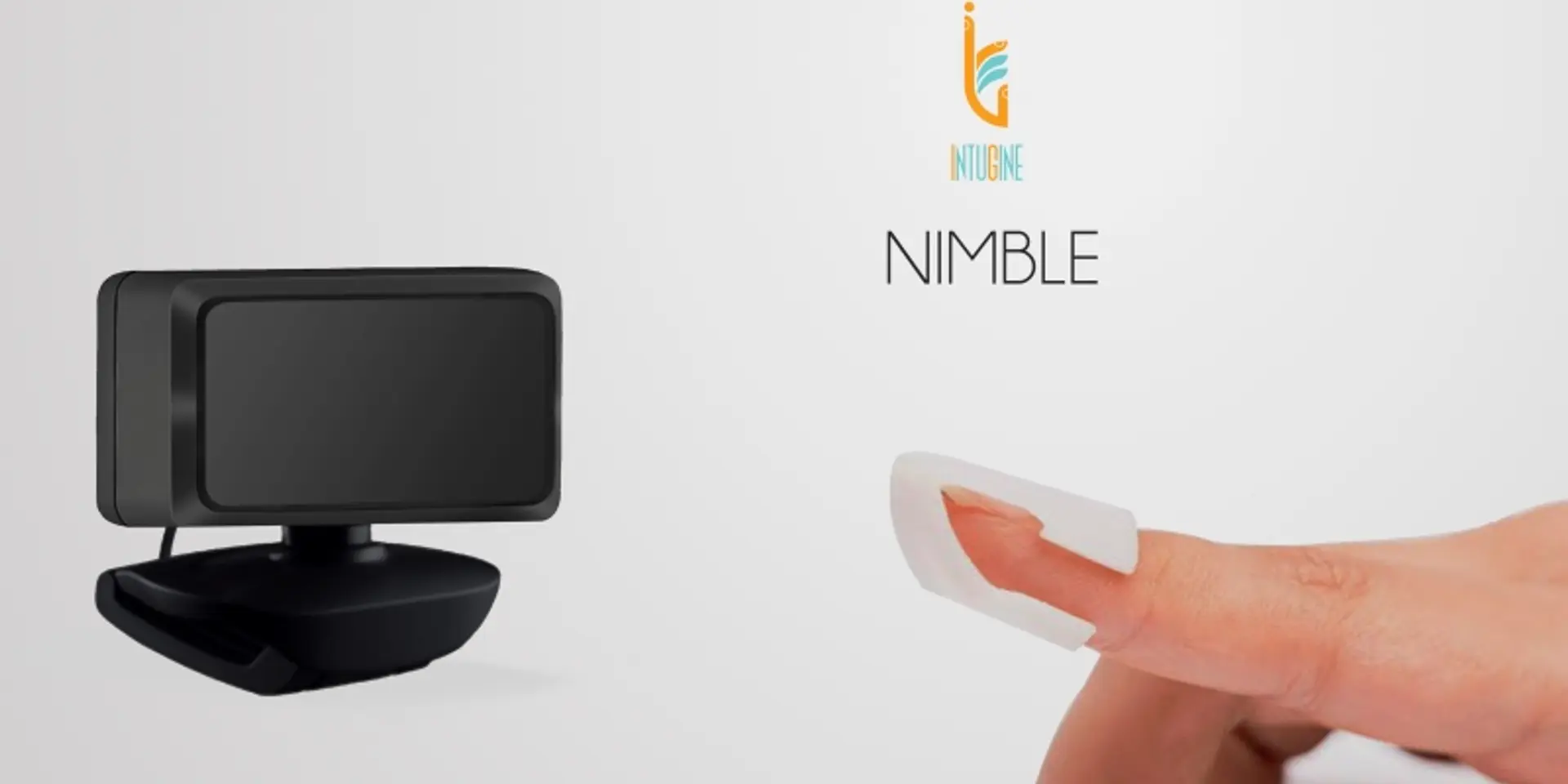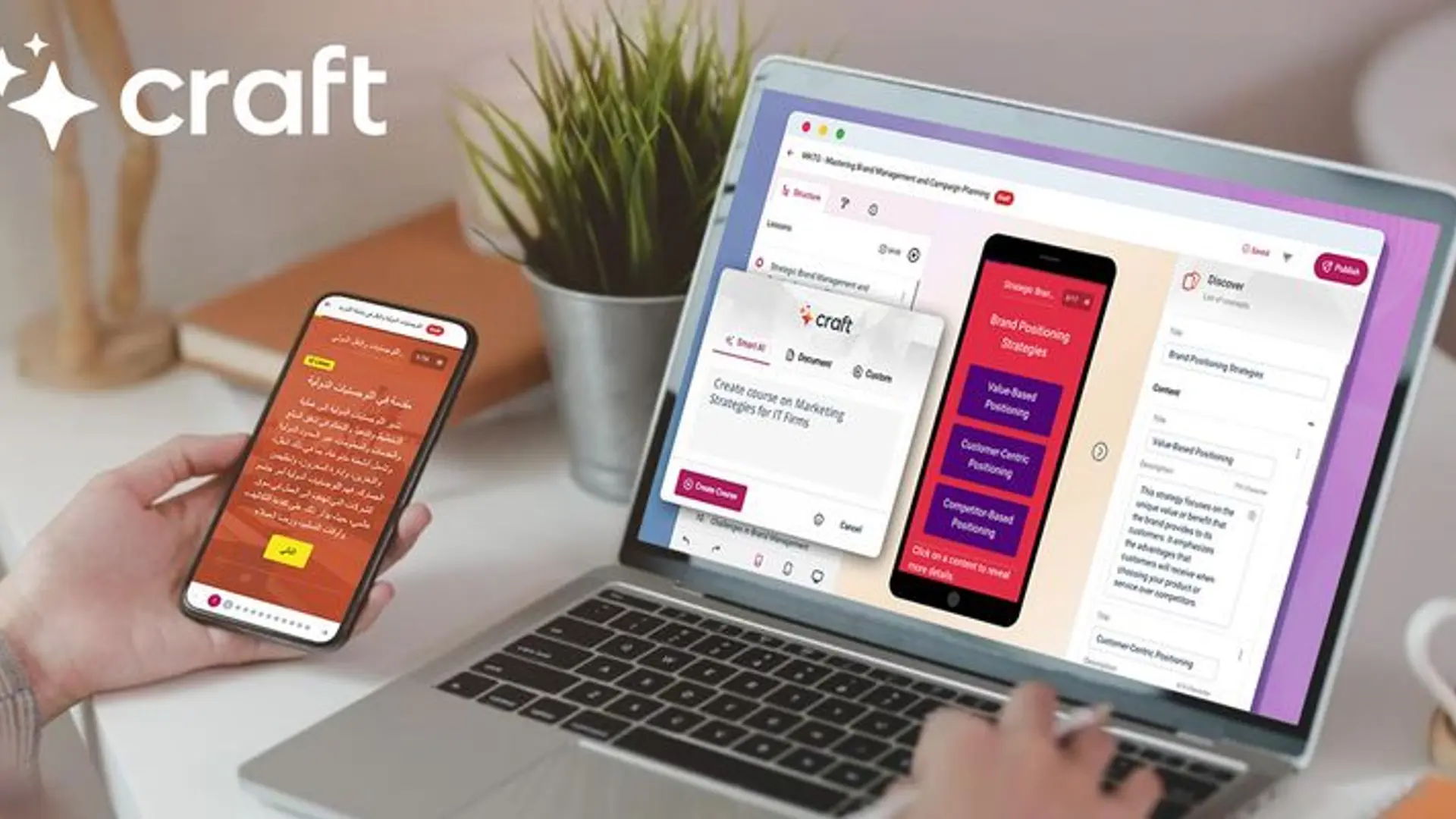Forget Harry Potter wands. Nimble will bring magic to your fingertips!
In all the deluge of e-mails and push notifications that give us the false sense of security of being connected to the world, we humans have lost touch with the 'human' way of communication. We have, since time immemorial, interacted with movements - hand gestures, voice or even simply, a smile. But even as our generation becomes more tech-savvy, the human component is on the decline. Nimble wants to change that by bringing a human element into our machine interactions.
Nimble is an innovation by three undergraduates from IIT Kharagpur – Harshit Shrivastava, Vivek Kumar and Abhishek Sharma. It is a tiny ring-like device that can transform a space of 15 feet in front of your screen into a human interaction space. Gestures like swap, clap, flick and wave are enabled by the device. For example, if you want to wake up your PC you could do so with a clap and then move the cursor with the tip of your fingers.

Use cases of Nimble include:
Gaming: Forget the touch pad or the bulky controller. Now you have the whole of room space for your perusal. Users can swing and dance around while playing games. With Nimble, playing simple games like Fruit Ninja can give you your daily dosage of adrenaline. Or complex gaming systems, that incorporate VR headsets, could use Nimble's environment sensing capabilities to use it as their control systems.
Controlling your PC/Laptop: With simple hand gestures you can change songs, navigate maps, increase volume, browse internet etc. A wave of the hand could mean controlling a movie being played - forward to fast forward, up and down to control volume; tapping a finger to play or pause. The device comes with pre-programmed gestures, for example 'G' to open Google or an 'X' to close applications.
Business presentations: With Nimble, you won't have to carry a pointer or a clicker. Just roll up your sleeves and deliver the most rocking presentation.
Home automation: Imagine being able to dim and brighten the lamps at your home with just a flick of the wrist.
“We are all very passionate about the future of motion and gesture control technology,” said Abhishek Sharma, the co-founder of Intugine.
The Intugine team (the team behind Nimble) has already worked to integrate Nimble with several applications like Fruit Ninja, YouTube, Angry Birds, and Netflix among others. Application developers will be able to easily integrate their programs to sync with Nimble.
“We are confident Nimble will completely change the way people view gesture control. From first-person shooter gaming, business presentations and academia, to something as simple as changing the song or dimming the lights, Nimble will revolutionize how people interact with technology," Abhishek added.
The IIT-KGP dropouts' story of starting up
The trio of Abhishek, Harshit and Vivek belonged to the same batch at IIT Kharagpur.
"We loved games ourselves and this common interest brought us together. We felt the need for a new gaming device that is more immersive and interactive and provides a better experience than just clicking buttons or pressing keyboard buttons," says Vivek.
The team droppped out of college in the month of February and have been working hard since, to develop a finished working prototype.
"We believed that we had the technology which was far more advanced than the present products and we were having a tough time juggling between Intugine and academics. Also, the limited resources available in Kharagpur encouraged us to drop out and work on Nimble full time," Harshit added.
The team has applied for a national patent as well as filed a PCT application for international patent in the month of January 2014.

On building a hardware startup from India
Building a hardware start-up can be very difficult depending on the equipment being used in the device.
"It was personally very tough for us to get some of the equipment for the ring and the sensor since they were not available in India and had to be imported from specific manufacturers in Shenzen. Also, the Indian ecosystem is not yet mature enough for hardware startups, unlike China or US where they have accelerators specially for hardware start-ups," says Abhishek.
Not many investors are ready to take risks with hardware start-ups, and since a lot of capital is required to build finished product from a working prototype it also hinders the growth for hardware startups. To tackle this, Intugine has launched Nimble on the crowdfunding platform, Indiegogo where people can back their campaign and gain early access to Nimble along with other incentives.
The campaign nitty gritties
The team has set a goal of $50,000 on Indiegogo.
"We would be opening a variety of options for our backers like Early Bird edition (for $79), developer version which will come with the SDK for developing and integrating new applications for Nimble (for $99), the consumer version will be shipped a couple of months after the developer version. The consumer version will be shipped with a lot of fun and useful apps and games for both children and adults (for $99). Each package will come with two Nimbles, one for the tip (for better gaming experience) and one in the shape of a ring for long term computer and home automation usage, We would also be opening a family version ( six rings and two sensors) for $185," says Abhishek.
Backers will have the freedom to donate any amount between $1 to $5000.
Nimble vs Kinect vs Fin vs Myo vs Leap Motion
The LeapMotion controller was shipped in July this year. While Nimble uses a ring and sensor combination, Leap Motion makes do with the sensor only. But in Nimble's case the user can effect control from up to 15 feet (4.5 m) away; the LeapMotion works upto just three feet (1 m approx).
Unlike the Kinect which is unable to provide the accuracy required for controlling a PC, Nimble can extend the workspace from the PC table to sitting anywhere in the room and controlling. Nimble tracks the fingers in all orientations of hand and can track any number of users within 5 m of the device.
Differentiation with Logbar Ring, Fin, and Nod
The primary use cases of Nimble - gaming, CAD and Virtual reality headsets, need very good accuracy, fast response, and a sense of scale. All these features are only possible with a technology using computer vision.
"You cannot play a point-and-shoot game with Finn or Ring, because these games needs immediate response and high accuracy position tracking. Similarly all PC games and most android games need that. Among the three, only our product offers that," claims Abhishek.
"Finn and Ring are targeting a different use case. They want to be a gadget used for taking calls, change songs, change slides, and solve simpler problems. That is why, they don't need an additional sensor, because there is no need of accuracy for their use cases," he adds.
According to Abhishek, Ring and Fin track acceleration. "We track position. We directly get the accurate position data, while the other two, use acceleration to estimate position. In this estimation, there is a lot of error induced which can not be avoided by any means," claims Abhishek.
The team has launched their crowdfunding campaign. You can back the project here.







